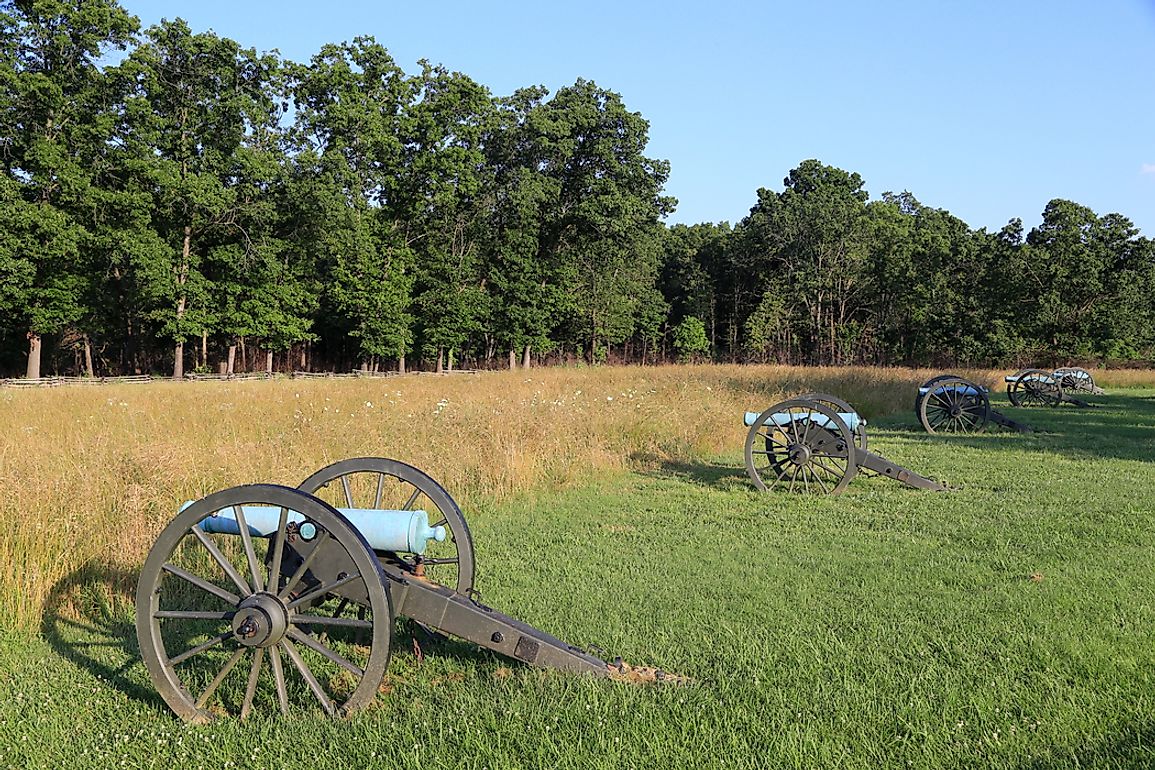Battle of Pea Ridge: The American Civil War

5. Background
The Battle of Pea Ridge was fought from March 6th to the 8th, 1862, and it was among the most influential in American Civil War history. Its belligerents were constituted by the Federal Army of the United States and the Confederate States’ troops. Soldiers on both sides fought this battle to determine which military, and government, could lay claim to the states of Arkansas and Missouri. The Union’s forces were greatly outnumbered, as their 10.5 thousand-man force went against a Confederate force that numbered approximately 17 thousand strong. Nearby, a smaller battle was underway at Bentonville, Arkansas.
4. Tactical Perspectives
The Union’s forces under the leadership of General Samuel Curtis launched an offensive with the intent of making an advancement from central Missouri southward, therein driving Confederate forces out of Missouri, a state which had not formally seceded from the US, into the northwestern regions of Confederacy-governed Arkansas. Confederate Major General Earl Van Dorn, on the other hand, led his own forces in launching a counteroffensive in an attempt to recapture Missouri and northern Arkansas from the hands of the Union. This attempt was, however, unsuccessful, as Major Curtis’s forces managed to fend off the Confederate forces despite being grossly outnumbered. The casualty count was markedly substantial on both sides, though they were higher for the Confederates. Confederate losses totaled to approximately two thousand, while for the United States the number was much smaller, with the number being estimated to stand at 1,300 casualties.
3. Major Movements
Prior to the battle, the Union forces stationed in Missouri had successfully managed to push the Confederate Missouri regiments, who were under the direction of Major General Sterling Price, out of the state as well. Major Curtis was determined to pursue the Confederate forces further still, to decrease their presence in northern Arkansas. The Union forces then moved around 10.5 thousand soldiers and 50 artillery units into Benton County, Arkansas. Major Curtis’ men assumed a defensive position, with the expectation that the Confederate forces would launch an assault from the south. No plans for further advancement were made, as the Union forces had limited reinforcements and the Union leadership felt the battle would be best won by securing and keeping a fortified defensive station to fight from. The Confederate forces under the leadership of General Van Dorn were aware of the advancements that the Union forces were intent on making into Arkansas. The Confederate forces’ plan was to flank Major Curtis’s army, attack it from the rear, and ultimately encircle and destroy them from the outside working inward.
2. Outcome
Despite the Confederate forces’ counter-movements, General Curtis remained confident throughout the battle. The Union forces were split into four divisions, and their respective commanders proved highly effective in making decisions in different lines of battle that ultimately resulted in a pivotal victory in the Battle of Pea Ridge for the Union as a whole. General Van Dorn, on the other hand, had many poor decisions and logistical shortcomings to blame for the defeat incurred by his Confederate forces. He had failed to effectively control his army and, when one of his commanders was killed, the division under the fallen McCullough fell apart. As the Confederates became splintered thereafter, tactical movements could not effectively utilize the fragmented division, and it cost the Confederate forces greatly.
1. Significance
The gains made by Union forces led to an increased Federal control over Northern Arkansas and Missouri, and a major southward retraction by the Confederates. The Union regiments’ dominance over a larger Confederate military force also contributed greatly in facilitating the successful advancements made by Union forces in subsequent months across the region. Nonetheless, the defeat of General Van Dorn’s forces did not mean that the state of Missouri was no longer under any serious threat from the Confederates, and the war would rage on in the Western Theater and across much of the nation for several more years. A military park was established on the historic battlefield nearly a century later.











